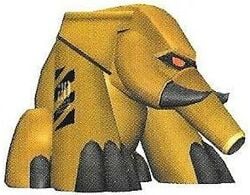Grave Tusk: Difference between revisions
From the Super Mario Wiki, the Mario encyclopedia
Jump to navigationJump to search
m (Text replacement - "[Cc]haracter-infobox" to "character infobox") |
No edit summary |
||
| Line 1: | Line 1: | ||
{{character infobox | {{character infobox | ||
|image=[[File: | |image=[[File:DKJB Grave Tusk art.jpg|250px]] | ||
|species=[[Tusk]] | |species=[[Tusk]] | ||
|first_appearance=''[[Donkey Kong Jungle Beat]]'' ([[List of games by date#2004|2004]]) | |first_appearance=''[[Donkey Kong Jungle Beat]]'' ([[List of games by date#2004|2004]]) | ||
| Line 13: | Line 13: | ||
==Gallery== | ==Gallery== | ||
<gallery> | <gallery> | ||
Gravetusk.png|Grave Tusk in-game | |||
Grave Tusk trunk blocked.png|Grave Tusk's trunk gets blocked with a Blood Pine | Grave Tusk trunk blocked.png|Grave Tusk's trunk gets blocked with a Blood Pine | ||
Grave Tusk defeated.png|Grave Tusk is defeated | Grave Tusk defeated.png|Grave Tusk is defeated | ||
Revision as of 20:12, April 20, 2022
| Grave Tusk | |
|---|---|

| |
| Species | Tusk |
| First appearance | Donkey Kong Jungle Beat (2004) |
| Latest appearance | New Play Control! Donkey Kong Jungle Beat (2008) |
Grave Tusk is the second Tusk in Donkey Kong Jungle Beat. It is the ruler of the Grape Kingdom in the GameCube version. In the New Play Control! version, it is the ruler of the Cherry Kingdom.
It appears as a large, robotic elephant, colored brown, with red eyes and darker brown tusks.
Grave Tusk is fought much the same way Turret Tusk and Torch Tusk are fought. At first, it has the same attacks as Turret Tusk, but after enough damage is done to it, it gains a laser attack. The only way to dodge this attack is to get into a corner that the laser will not hit. Again, Donkey Kong must throw Blood Pines at him to reveal and attack its heart. Grave Tusk is fought in a desert area.
Gallery
Names in other languages
| Language | Name | Meaning |
|---|---|---|
| Japanese | キクゾウ Kiku Zō |
From「聴く」(kiku, to listen) and「象」(zō, elephant) |
| Italian | Robofante 3.1 |
Robo-(ele)phant 3.1 |
Trivia
- The textures of Grave Tusk and Torch Tusk are internally swapped, suggesting they were meant to be encountered in opposite order.


